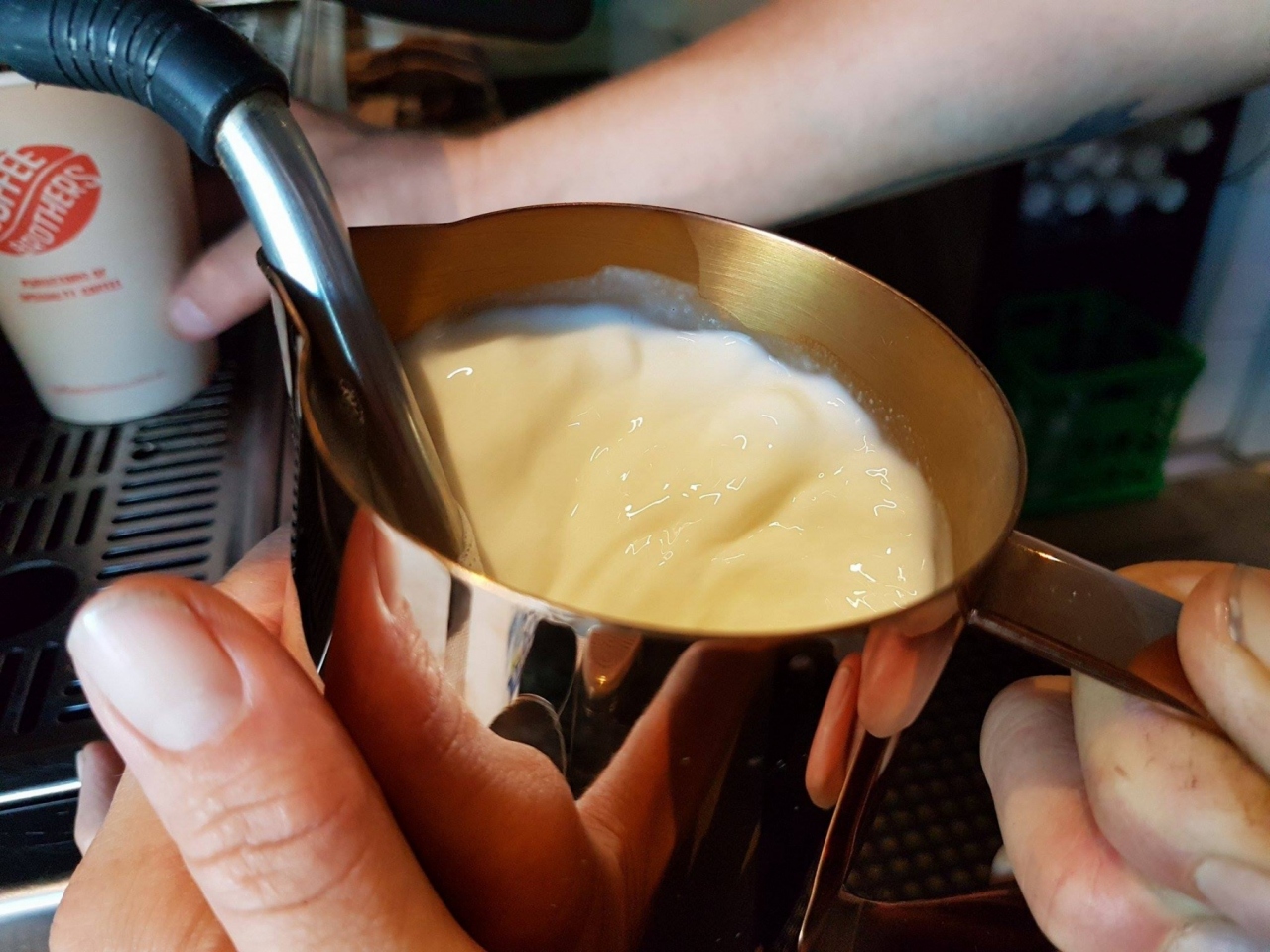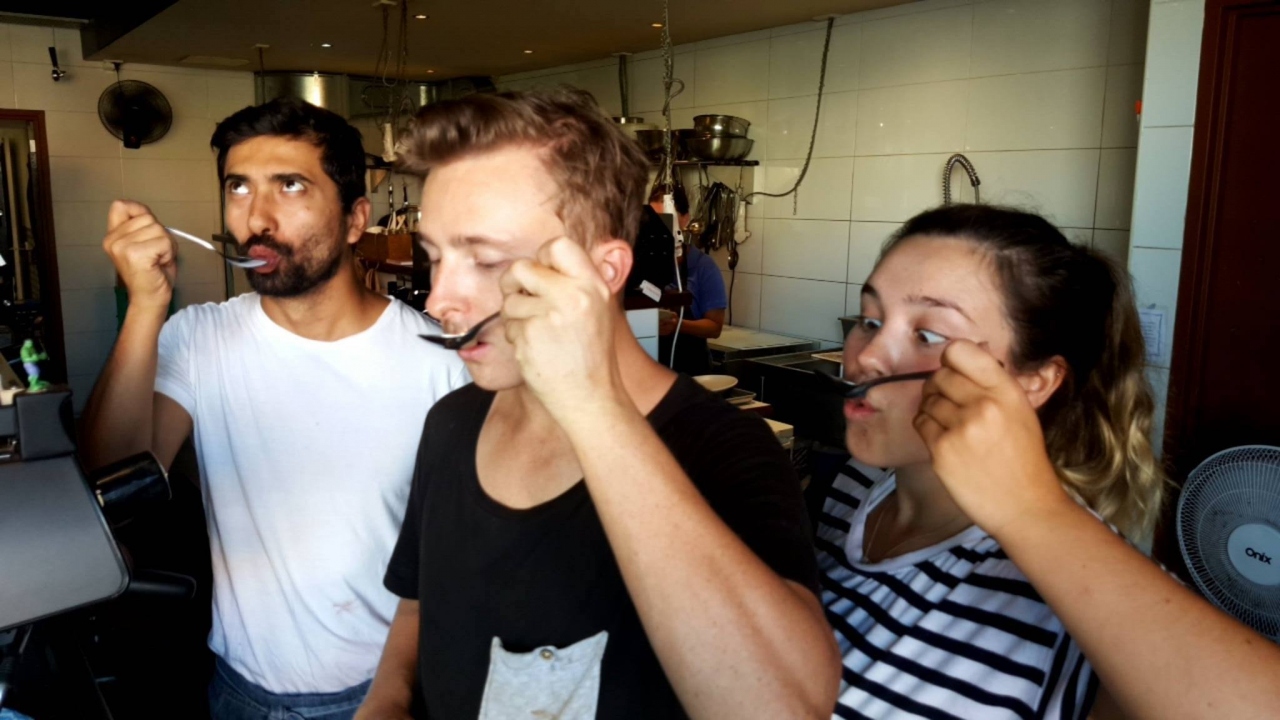First thing's first: Welcome to the CB blog!
We are very excited to really get this page up and running with an incredible variety of knowledge to share with you.
At CB, we live and breathe specialty coffee and with our passion growing so hard and fast, we continue to discover so many interesting things about the crazy world of coffee. We are so very lucky to share this passion and industry with some incredible people and we absolutely love to expand our knowledge and we love sharing it just as much.
So the purpose of these blogs is very simple. Our focus will be on the home brewers, on the the customers, on the greenies just starting coffee and hospitality. We want to share everything with you so you too can fall in love with what is known to bring people together both in a community and across the world.
So welcome.
(P.S. This is all about sharing, so please let us know if there is something you’d like to read about or read more about or even if you just want to share your comments and experiences. We love hearing from you!)
Milk Steaming 101

It’s super exciting owning your own coffee machine, but figuring out how to steam milk can be a real trial and error endeavour, and as fun as that experimentation can be, most of us just want our damn good morning coffee. So I have tried to compile all my knowledge of steaming milk and condense it into 5 tips for you to use to get you on your way to becoming milk pros!
When we talk about steaming milk, there are a few points to really consider in helping you. The ultimate goal is to produce a beautifully textured and creamy product that mixes well with your espresso shot. If your milk texture is too thick and bubbly, it will feel more like you are eating your frothy concoction rather than drinking a smooth liquid. You also don’t want to cook your milk so hot that you have to leave it for 20 minutes before it’s drinkable.
All of the tips and tricks I am discussing here are transferable across all alternative milks as well. One difference, however, is in relation to temperature, such as how almond milk does not need to be heated as much as cows milk to avoid an added bitterness. Test it out and see what best suits your palate. You can always e-mail us below for further questions.
So here are some things to look out for:
1. First things first- fresh is best. Re-steaming milk won’t act as a simple reheat. It will continue to cook and burn the milk, giving your coffee a strange, burnt or bitter flavour.
2. Temperature. The temperature of your milk is very important. If the milk is heated too much, the proteins in the milk go through a change that is not fixed by simply cooling it down again. This is referring to the denaturing of proteins. The fats in full cream milk also undergo a physical change in chemical composition when heated well past 70degrees. In a cafe, your barista is aiming to heat the milk to somewhere between 60-65degrees and 70degrees for extra hot.
The temperature of the milk can also be your best friend in adjusting your final foam level, but I will delve into that in more detail later.
When steaming your milk, place your dominant hand around the jug. Avoid putting it underneath the base of the jug as this will not be as accurate of a gauge for the temperature. You will feel the temperature of the milk heat up on your palm as you are steaming. You’re indicator for the right temperature will happen when you cannot hold the jug for 3 consecutive seconds. That’s you’re signal to turn off the steam wand. For extra hot drinkers, continue steaming for an extra 1-3 seconds depending on your jug size (another tip for you extra hot drinkers: pre heat your mug before pouring in the espresso and milk so the glass or ceramic doesn’t leach out the heat). A great way of truly measuring your milk temperature is to use a thermometer (we have them online if you need it). You can use it to train your hand and perception of heat until you feel comfortable working without it.
3. The volume of milk you use. The amount of milk you use in the pitcher or jug can either make your life a walk in the park or a walk over needles. When first learning, you should fill the pitcher somewhere between the bottom of the spout and 1cm above the bottom of the spout. Under filling your pitcher may cause your milk to spin wildly out of control and it may turn out super bubbly. It will also heat up very quickly. Over fill your jug too much, and you may find the milk ending up on your bench instead of in your coffee before it’s even warm! If you need to under or over fill your pitcher to cater for your cup size, consider a different sized jug.
4. Foaming your milk. This is a longer point as it is often one that people struggle with the most when learning. Foaming the milk is what determines whether you are drinking a flat white, cappuccino or a babycino. It is not an easy thing to master and certainly takes a lot of practice due to the mass amount of variables that go into foaming your milk, but I shall try simplify it so it is easier to understand.
Foaming the milk, or texturing the milk, is the process of adding air into the liquid, thickening it up to mix into the espresso shot. The more air you add to the milk, the thicker it becomes. No air for flat whites, lots of air for cappuccinos. The addition of air occurs when you hear the ‘tssk tssk’ sound coming from your pitcher and steam wand, and it is this sound that will become one of your best friends in foaming milk. You make this sound by lowering the pitcher slightly whilst steaming so that the air holes on the steam wand are just - only JUST - above the milk and open to the air. When determining how much air you wish to add, this can come down to trial and error. Unfortunately I cannot provide you a number of seconds to count, as each jug size is different and each coffee machine is different with different steam wand pressures, but I can give a few tips to help you figure it out for yourself.
My first tip is in relation to temperature. For a smooth, creamy milk texture with microfoam (when the bubbles added are so fine you can barely see them, and the foam has a creamy raw meringue texture), all the air should be added before the milk temperature hits around 38degrees. I call this hand temperature. Pay attention to your milk temperature in the initial stages of heating. You will notice a point when the jug switches from feeling cold to feeling warm. Right in the middle, there is a microsecond moment where you can’t feel the temperature. This is because it is the same temperature as your hand. Once you have hit this point, and the jug suddenly feels warm rather than cold, stop adding air.
The final stages of heating the milk from here on should focus on mixing the added air into the liquid. This is how we make the milk taste creamy. If you were to add air into the milk when the milk is hot, a couple of things happen. 1. The milk does not have enough time to mix everything in the jug together, often causing large bubbles and froth that separates from the liquid. 2. The texture of the milk may end up too thick and bubbly, more towards the babycino side of froth rather than foam. 3. Consider you are adding air for the full duration of the steaming process – there will be so much air added into the milk that you’re coffee will be so incredibly thick, you will need to spoon it down rather than sip. Of course - for my frothy coffee lovers – by all means, aerate away.
Another friend of yours will be sound. You may have noticed that sometimes your steam wand and milk will screech at you. It’s not the nicest of sounds. When the screeching sounds, one of two things are happening in your milk: 1. The overall milk temperature is too hot, or 2. There is no air in the milk. Even for flat whites in the cafe, we add a couple of ‘tssk’s of air to help avoid this sound. It won’t add too much foam and will certainly sound more pleasant to steam.
5. Finally – the spin. Spinning the milk acts to mix the liquid and the air together, as I have mentioned above. A controlled spin of the milk in the jug helps to create that creamy texture and reduces your chance of accidentally adding more air. The alternative to spinning the milk is folding the milk, which is much less controllable and often leaves spillages on the floor and bench.
To achieve the spin, I suggest lining up your steam wand in line with your body before you start. Place the wand tip in the centre of your jug, with the holes only just submerged beneath the milk. Then, tilt your jug on an angle about 20degress to the right or left (whatever is most comfortable for you). By angling the wand in relation to the jug like this, you are telling the steam to spin around the edges of the jug as opposed to straight down the middle. This should create your spin for you without you needing to move a muscle.
So there are my few little tips on steaming milk at home to create that milky texture you experience in a cafe. If you have any questions or need further explanation on any of these points, please don’t hesitate to ask! We love it when you ask questions!
Public Cupping

Coffee Brothers HQ cafe will be cupping some awesome coffees on Tuesday 31st January between 1-2pm.
The cupping process is our method of testing and judging and tasting new coffees before sending the green beans off to a roaster with a purpose and end goal. In this process, we judge the coffee on its aroma and fragrance, acidity, balance, body, cleanliness in the cup, consistency as well as look for defects and potential uses for the coffee. It is a great way of discovering what is out there in the world.
And we want to invite you to join us!
No experience required, just pop in and ask us how it works! You too can learn to look like a pro when tasting and judging coffees. We will go ahead with the cupping, and you can just watch or pop in n out whenever you feel comfortable. Even 2 minutes is fine!
We look forward to seeing you there.
| Displaying 5 to 6 of 12 total items | First Prev 1 2 3 4 5 Next Last |
